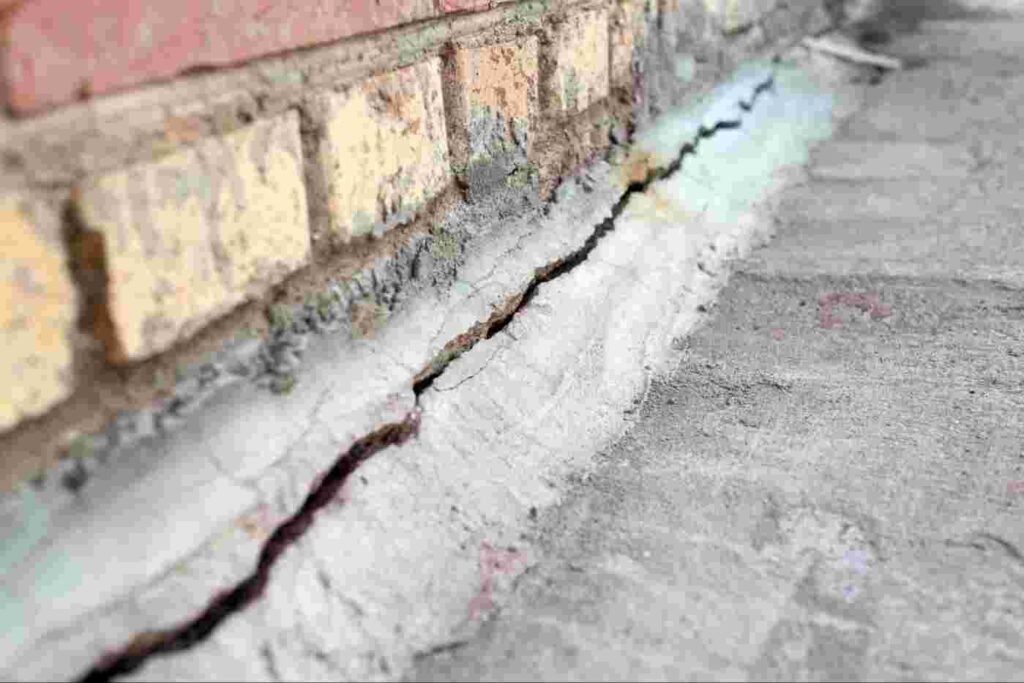Foundation cracks are a common concern for homeowners in Toronto and across Ontario. Various factors, including natural settling, soil conditions, and weather changes, can cause them. While some cracks are minor and pose little risk, others can lead to severe structural problems if not addressed promptly. In this article, we’ll explore the different types of foundation cracks, how to fix them, and the importance of working with a reliable foundation repair contractor in Toronto and Ontario.
Types of Foundation Cracks
Understanding the type of crack in your foundation is crucial to determining the appropriate repair method. Here are the most common types of foundation cracks:
1.Hairline Cracks:
Hairline cracks are small, often less than 1/16 of an inch wide. These cracks are usually caused by the natural settling of the house or minor shrinkage of concrete as it cures. While they are generally not a cause for concern, they should be monitored to ensure they don’t worsen over time.
2.Vertical Cracks:
Vertical cracks run up and down the foundation wall and are usually caused by settling or shrinkage. They are typically less severe than horizontal cracks and can often be repaired with minimal effort. However, if left untreated, vertical cracks can widen, allowing water to seep into the basement.
3.Diagonal Cracks:
Diagonal cracks are usually caused by differential settling, where one part of the foundation settles more than another. These cracks can indicate more serious structural issues and require professional assessment and repair.
4.Horizontal Cracks:
Horizontal cracks are the most concerning type of foundation crack. They are often caused by external pressure, such as soil expansion or hydrostatic pressure from groundwater. Horizontal cracks can compromise the foundation’s structural integrity and require immediate attention.
5.Stair-Step Cracks:
Stair-step cracks are common in brick or block foundations and follow the mortar joints in a stair-step pattern. These cracks are often caused by differential settling and can signify structural movement.
Ways to Fix Foundation Cracks in Toronto and Ontario
The method used to repair foundation cracks depends on the type and severity of the crack. Here are some common ways to fix foundation cracks in Toronto and Ontario:
1.Epoxy or Polyurethane Injection:
Epoxy or polyurethane injections are often used for hairline and small vertical cracks. These materials are injected into the crack, filling the gap and preventing water from entering. Epoxy injections bond the concrete together, while polyurethane is more flexible and can accommodate slight movements in the foundation. This method is relatively quick and cost-effective, making it a popular choice for minor cracks.
2.Crack Stitching:
Crack stitching is a method for repairing larger or more severe cracks. This technique involves inserting metal bars (stitches) across the crack to hold the foundation together. The stitches are then bonded to the concrete with a high-strength epoxy, reinforcing the crack and preventing it from widening. Crack stitching is often used for diagonal or stair-step cracks that indicate structural movement.
3.Exterior Waterproofing and Foundation Repair:
For more serious cracks, especially horizontal ones, exterior waterproofing and foundation repair may be necessary. This method involves excavating around the foundation to expose the damaged area. The crack is then sealed from the outside with a waterproof membrane, and the foundation may be reinforced with steel beams or other materials to prevent further movement. This method repairs the crack and protects the foundation from future water damage.
4.Underpinning:
If the foundation has experienced significant settling or movement, underpinning may be required. Underpinning involves strengthening the foundation by extending it deeper into the ground or adding additional support structures. This method is more complex and expensive than other repair techniques but is essential for addressing severe structural issues.
5.Helical Piers:
Helical piers are steel shafts with helical plates that are driven into the ground to stabilize and support the foundation. They are often used in cases where the soil beneath the foundation is unstable or has shifted. Helical piers can help prevent further settling and provide long-term stability for the foundation.
Importance of Working with a Reliable Contractor
Foundation crack repairs are not a DIY project. Working with a reliable contractor with experience and expertise in foundation repair is essential. Here’s why:
1.Accurate Assessment:
A professional contractor can accurately assess the severity of the foundation crack and determine the appropriate repair method. They have the tools and knowledge to diagnose underlying issues that may not be immediately visible.
2.Quality Workmanship:
Foundation repair requires precision and skill. A reliable contractor will use high-quality materials and techniques to ensure that the repair is durable and effective. Poor-quality repairs can lead to further damage and more costly fixes down the road.
3.Safety:
Foundation issues can compromise the safety of your home. A reputable contractor will ensure that the repair is done correctly, protecting your home’s structural integrity and its occupants’ safety.
4.Warranty and Peace of Mind:
Many professional contractors offer warranties on their work, giving you peace of mind that the repair is covered if any issues arise. This warranty is a testament to the contractor’s confidence in their work and commitment to customer satisfaction.
5.Compliance with Local Regulations:
In Toronto and Ontario, foundation repairs may be subject to local building codes and regulations. A licensed contractor will ensure that all work complies with these requirements, avoiding potential legal issues or fines.
Choosing the Right Contractor in Toronto and Ontario
When selecting a contractor for foundation repair, consider the following:
•Experience and Reputation: Look for contractors with a proven track record of successful foundation repairs in Toronto and Ontario. Check online reviews and ask for references from past clients.
•Certifications and Licensing: Ensure that the contractor is licensed, insured, and certified to perform foundation repairs.
•Detailed Estimates: Request detailed estimates from multiple contractors to compare costs and services. Be wary of significantly low bids, as they may indicate subpar materials or quality.
•Communication: Choose a contractor who communicates clearly and is willing to answer your questions. A good contractor will explain the repair process and keep you informed throughout the project.
Conclusion
Foundation cracks are a serious concern for homeowners in Toronto and Ontario, but they can be effectively repaired with the right approach. Understanding the types of cracks and the appropriate repair methods is the first step in protecting your home. However, working with a reliable contractor is the most critical factor in successful foundation repair. By choosing a reputable professional, you can ensure that your foundation is repaired correctly, safeguarding your home’s structural integrity for years to come.







